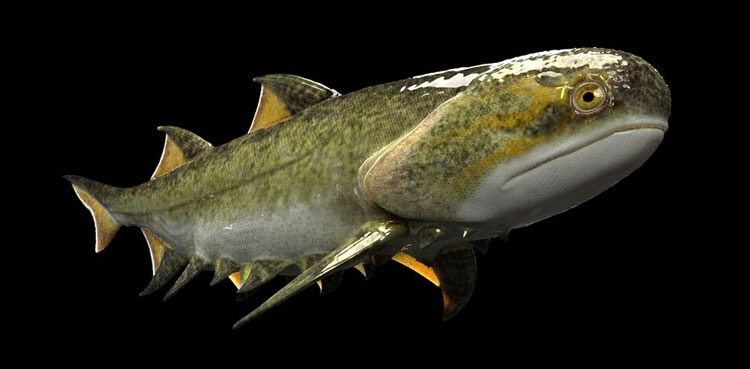Chinese fish fossils take a bite out of mystery of origin of jaws

For human beings and 99.8% of our fellow vertebrates, having jaws is an integral part of life. Just try eating a taco without them. But, like everything else in our bodies, jaws had to start somewhere.
Researchers on Wednesday described the earliest-known vertebrates that possessed jaws as revealed by fossils of four remarkable fish species unearthed in China, two dating from 436 million years ago and two from 439 million years ago. Until now, only scrappy fossils of vertebrates from that critical time in the evolution of animals with backbones had been known, leaving the earliest ones with jaws as something of a mystery.
“The new fossils change everything. Now we know how big they are, what they look like, how they evolved over time,” said vertebrate palaeontologist Min Zhu of the Chinese Academy of Sciences in Beijing, who led the research published in the journal Nature.
The newly identified species – none more than a few inches long – were part of two treasure troves of Silurian Period fossils discovered in southern China. Until now, the earliest-known jawed vertebrates were fish dating to 425 million years ago.
“Nearly all the backboned animals or vertebrates you know – for example, those you see in zoos and aquariums, and even including ourselves – are jawed vertebrates,” Zhu said. “The basic body plan of jawed vertebrates was set up quickly after their origin. For example, we can trace almost all our organs in the human body to the first jawed fish. That’s why it is important to look back, tracing the origins.”
More than 20 individuals of a fish about 1.2 inches (3 cm) long called Xiushanosteus mirabilis were found in Chongqing municipality. It was part of a group of armoured fish called placoderms that later included some real giants.
Its front half was covered by semi-circular bony plates. The back half was much more like a typical fish, including a powerful tail. It lived 436 million years ago, as did the similarly sized shark relative Shenacanthus vermiformis whose fossils came from the same site.
Shenacanthus was wrapped in large bony plates in the shoulder area, surprising for a shark relative. Unlike modern sharks, Shenacanthus had a weak and toothless jaw, perhaps feeding on small, soft-bodied prey.
Two other shark relatives – 4-inch (10 cm) long Qianodus duplicis and 6-inch (15 cm) long Fanjingshania renovate – dating from 3 million years earlier were found in nearby Guizhou province. They are the earliest-known members of the shark lineage, though their fossils were less complete and well-preserved than the other two species.
Qianodus is the earliest-known vertebrate with teeth, another evolutionary milestone. Its teeth were spiral-shaped, as Qianodus carried multiple generations of them that were added throughout its life. Fanjingshania boasted external bony armour and multiple pairs of fin spines.
Fish first appeared roughly 520 million years ago. These earliest fish were jawless, as are modern lampreys and hagfish. At the time when the newly identified species lived, the largest marine predators were sea scorpions reaching 8 feet (2.5 meters) long. Jaws helped paved the way for fish soon to dominate the seas and later give rise to land vertebrates that branched out into amphibians, reptiles, birds and mammals including people.
Jaws were just one of the evolutionary innovations.
“Jaws are important because they allowed vertebrates to become active predators for the first time. But it is also important to understand that the advent of jaws was just a small part of the overall transformation of the vertebrate body plan at this point in evolution,” said palaeontologist and study co-author Per Ahlberg of the University of Uppsala in Sweden.
Also Read: Illegal fishing continues in Indus despite Punjab ban
“At the same time, the construction of the skull changed radically, the inner ear was transformed, the head separated from the shoulder girdle, the pelvic fins evolved, the heart moved forward away from the liver, and the stomach developed. This was the single most drastic transformation in the whole evolutionary history of the vertebrates,” Ahlberg added.
from Science and Technology News - Latest science and technology news https://ift.tt/3H4wCxE
Comments
Post a Comment